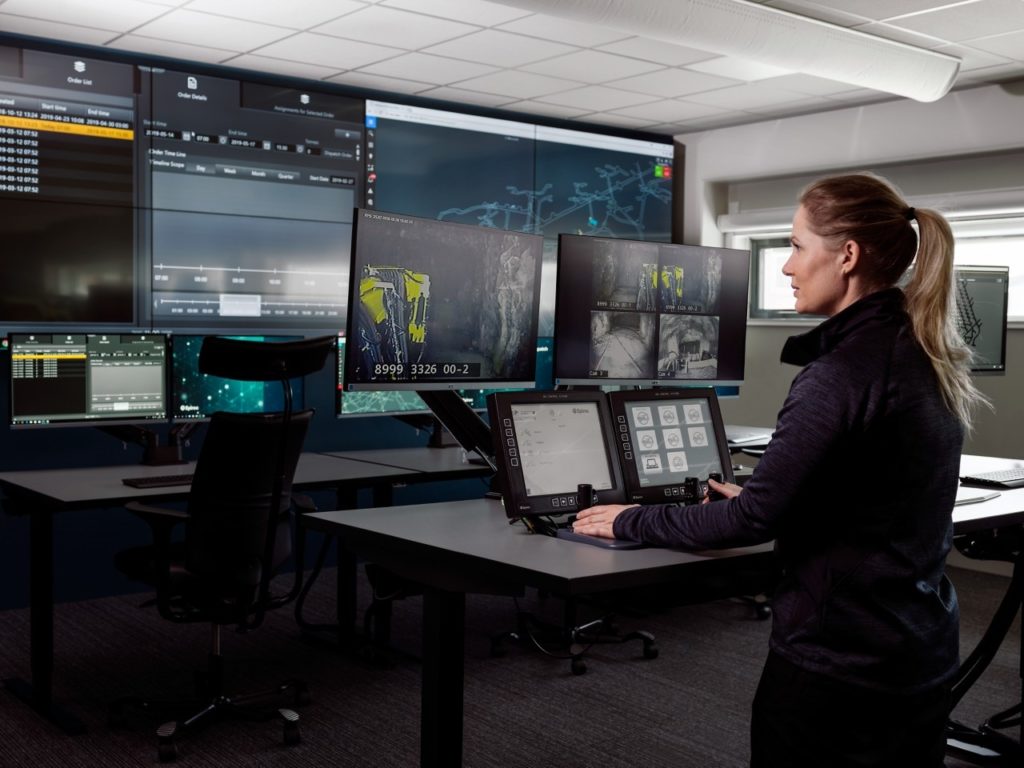“We expect that the demand both for equipment and in the aftermarket will be lower and that the effects of the pandemic will have a significant negative impact on revenues and profit in Q2 (June quarter).” That is the headline quote from Epiroc CEO, Helena Hedblom, in the mining OEM’s March quarter results.
While the prospects for the current quarter look far from rosy, the results for the March quarter were reasonably strong: revenues dipped only 7% (SEK9.134 billion ($903 million)) year-on-year, profits rose 3% to SEK1.4 billion and operating cash flow jumped 225% to SEK1.5 billion.
Despite Epiroc’s China business being hit in February, and its manufacturing facilities for consumables in India, South Africa, and Canada (Quebec) being temporarily closed from the end of March, there were limited COVID-19-related effects on its March quarter results, the company stated.
As the impacts of the pandemic continue to grow with restrictions from various governments and authorities, the impact has started to be felt more acutely by Epiroc. Hedblom told analysts after the results release that the commissioning of new equipment was becoming harder with such restrictions in place, as was the transportation of its products. On the latter, the company commented that its costs had risen.
Fortunately, the company is in the middle of a wide-ranging revamp to its supply chain that is seeing key parts and service personnel redeployed to hubs near its major customers. Although this program is not yet complete, the availability of local inventory has somewhat dampened the impact of the COVID-19-related restrictions to date.
Similarly, the company has managed to navigate a supply shortage of certain components in Europe, Hedblom said. Speaking to IM after the analyst call, she said the manufacturing teams were utilising existing component stockpiles to complete outstanding tasks.
Just how many future tasks the manufacturing team has all depends on how long mine stoppages in the likes of South Africa, Canada, Peru and India continue. While South Africa miners are set for a phased ramp up of operations and those miners in Quebec have been given the go ahead to reopen, there are many mines that remain on care and maintenances.
Hedblom said these dynamics were very different to financial downturns where specific commodities and companies with lower margins were hit due to cashflow issues.
“It is evenly split between different commodities,” she said referring to the shutdowns. “There are plenty of gold mines in there, for instance, and that is despite the gold price holding up well.”
During this time – and factoring in potential future supply chain issues – Epiroc is prioritising its aftermarket customers to keep existing mines operating.
One would estimate the percentage of revenue associated with aftermarket sales would, therefore, grow beyond the 72% registered in the March quarter (which itself is an 8% rise from the December quarter) based on the assumption mining companies would defer new equipment purchases until restrictions had been lifted and global economies had stabilised.
This would also mirror the March quarter results where Epiroc recognised a 12% organic increase in service orders, compared with the previous year, at the same time as orders for equipment, rock drilling tools and attachments decreased.
Yet, this all depends on how long existing mine stoppages are enforced.
Epiroc said: “Mining is deemed essential in many countries, which means that most mines continue to operate, but in some cases mines have temporarily stopped operations or operate at reduced capacity due to restrictions from governments and authorities.
“As a consequence, Epiroc estimates that revenues from the aftermarket will be negatively impacted in Q2. The magnitude of the impact will depend on how the restrictions will develop during the quarter.”
While the company is up front in its assessment that revenues and profits will be affected by the COVID-19 pandemic in the June quarter, the new CEO said the company would continue to invest in R&D throughout this period.
“We have consolidated in admin and marketing, in addition to manufacturing (see the latest announcement on its North Bay facility), but I am protecting R&D,” Hedblom told IM. In late November, Hedblom said the company was currently investing 2-3% of revenue in R&D.
Previous R&D investments have led to the development of many innovative products from Epiroc – mainly geared towards automation, digitalisation and electrification – and Hedblom said some “very exciting products” would be launched later this year, regardless of COVID-19 restrictions.
Some of these new products will likely help miners continue operating in environments such as those being experienced now, with Hedblom seeing the automation trend the company recognised, pre-COVID-19, picking up where it left off, post-COVID-19.
“The more people you can remove from the mine site and the more you can control the environment in which they work (remote operations, for instance), the better,” she said.











